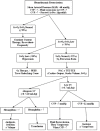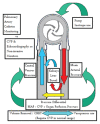The pulmonary artery catheter in 2008 - A (finally) maturing modality?
- PMID: 28971032
- PMCID: PMC5613410
- DOI: 10.4103/IJCIIS.IJCIIS_57_17
The pulmonary artery catheter in 2008 - A (finally) maturing modality?
Abstract
The first description of the flow-directed pulmonary artery catheter (PAC) was published in the 1970s by Jeremy Swan and William Ganz. Ever since its clinical debut, many controversies surrounded the use of the PAC. Regardless of these controversies, the most fundamental issues surrounding this hemodynamic monitoring device remain unresolved, including the exact indications, contraindications, identification of patients who potentially benefit from this technology, and the way we interpret and use PAC-derived parameters. Despite recent intensification of attacks against the use of the PAC by its opponents, it seems overly harsh to discount a technology that might be beneficial in appropriately selected clinical situations, especially when considering the fact that our true knowledge of this technology is somewhat limited. In fact, the PAC may still play an important role considering the resurgence of the concepts of euvolemic resuscitation and hemodynamic sufficiency. Republished with Permission from: Stawicki SP, Prosciak MP. The pulmonary artery catheter in 2008 - a (finally) maturing modality? OPUS 12 Scientist 2008;2(4):5-9.
Keywords: Euvolemic resuscitation; hemodynamic monitoring; hemodynamic sufficiency; pulmonary artery catheter; surgical critical care.
Conflict of interest statement
There are no conflicts of interest.
Figures



References
-
- Swan HJ, Ganz W, Forrester J, Marcus H, Diamond G, Chonette D, et al. Catheterization of the heart in man with use of a flow-directed balloon-tipped catheter. N Engl J Med. 1970;283:447–51. - PubMed
-
- Friese RS, Shafi S, Gentilello LM. Pulmonary artery catheter use is associated with reduced mortality in severely injured patients: A national trauma data bank analysis of 53,312 patients. Crit Care Med. 2006;34:1597–601. - PubMed
-
- National Heart, Lung, and Blood Institute Acute Respiratory Distress Syndrome (ARDS) Clinical Trials Network. Wheeler AP, Bernard GR, Thompson BT, Schoenfeld D, Wiedemann HP, et al. Pulmonary-artery versus central venous catheter to guide treatment of acute lung injury. N Engl J Med. 2006;354:2213–24. - PubMed
-
- Rubenfeld GD, McNamara-Aslin E, Rubinson L. The pulmonary artery catheter, 1967-2007: Rest in peace? JAMA. 2007;298:458–61. - PubMed
Publication types
LinkOut - more resources
Full Text Sources
Other Literature Sources

